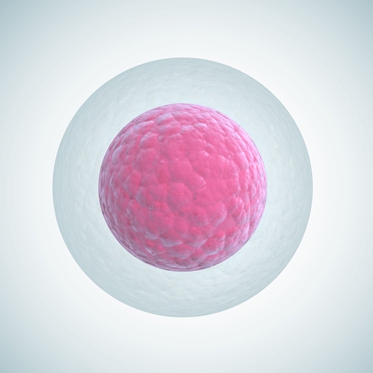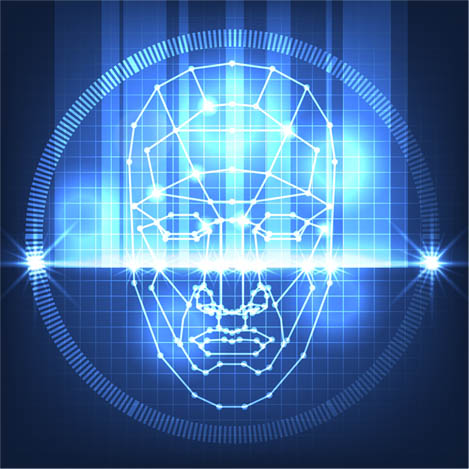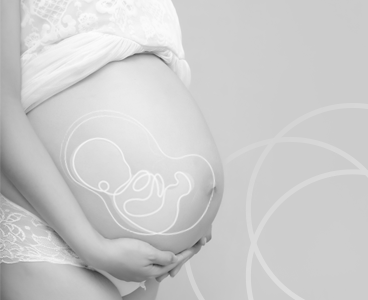Wanting to be a mother is an achievable and possible dream with the egg donation techniques that we carry out at the Cefer Reproduction Institute.
The progressive delay in the age to have children in our society reduces the chances of becoming pregnant. For this reason, techniques such as egg donation or more correctly called Donor Egg Reception, is an essential aid for many women with oocyte factor to fulfill their desire to be a mother.
Although it is commonly known as egg donation, the correct name for this technique is “reception of donated eggs” since the process carried out by the donor is also called egg donation. It is the solution for all those couples who present an oocyte factor.
To proceed with this technique, the woman’s uterus must be healthy.
The donor is required to perform a series of tests required by law.
Our donors are young voluntary university students who have to pass, in addition to the tests required by law, our own studies.
Once the tests have been passed, the donor must come every day so that our nurses can administer the medication correctly.
We use the most effective and safe medication: recombinant hormones.
Did you know that all our donors have Genetic studies among them? They are studied for the 33 most serious and frequent genetic diseases, because safety is not an option. It adds an important plus in safety to all the studies that we have been carrying out in CEFER fertility centers. Egg donation can also be made with fresh eggs, so you don’t have to worry about survival after vitrification (thawing).
But if you want maximum security, we can find your ideal donor because we will not only take into account your physical characteristics (breed, weight, eye and hair color, hair texture, etc.) but genetic compatibility in order to reduce risks for the most of 310 frequent and high-impact genetic diseases using the Compatibility (HERES Test)
If you are interested in knowing more about Compatibility, read below.
At the level of results, without a doubt, this technique is the one that offers the best results.
You administer the treatment with pills or patches. After 2 weeks we do an ultrasound check of the endometrium (internal part of the uterus) to verify that it is optimal. Then you have to continue after the transfer, until the pregnancy test
After the study and selection of healthy and fertile donors, only 20% are accepted and begin a stimulation treatment for which they come to the center to be administered the medication and carry out controls.
This phase is followed by the extraction of the ovules.
We isolate the healthy sperm from the rest of the semen. If you are undergoing IVF, the eggs are placed in the culture dish. With the ICSI technique, a healthy spermatozoon is directly introduced into each mature egg, avoiding non-viable embryos. In some cases we can recommend performing the IMSI in addition to the ICSI.
This technique supposes a selection of the spermatozoon to fertilize each ovule much more precise than ICSI, since a much more powerful microscope is used (16000 magnifications compared to 400 of a normal one), we can observe if there are vacuoles inside the nucleus of the spermatozoon, correlated with DNA abnormalities.
*IMSI is available for now at the cefer fertility center in Barcelona
After 16 to 20 hours of the introduction of the spermatozoon in the ovule, a study is made again under a microscope. If two circles (pronuclei) are seen, the ovum is fertilized! We already have an embryo. And we will inform you as soon as we know!
Every day the embryologists follow the evolution of the embryos one by one. This monitoring provides information of great value to select which are the most likely to be a mother to give you.
We have the new Timelaps embryo incubation system (Geri and EmbryoScope) that incorporates an image capture system. This makes it possible to follow the evolution of each embryo without removing it from the incubator, seeing its evolution in first person.
Among its advantages, it is worth noting that it provides much more of this valuable information that helps to detect morphological abnormalities in the embryo that are not visible with traditional methods, in addition to improving the selection of the best embryos with the greatest potential to leave you in a state.
it also allows the incubation of the embryo to be more stable, keeping the temperature, humidity and the environment without variations since they do not have to be taken out to observe them.
This makes it possible to increase the viability of the selected embryos, and, with it, their gestation, reducing the abortion rate by half compared to not making said sperm selection.
Embryo Transfer does not require sedation, as it is not annoying. It is performed eco-guided, that is, under ultrasound control, which allows us to ensure that the embryos are deposited correctly.



Do you want us to inform you about this egg donation technique?
Ask us.
Recent scientific studies show that the risk of genetic disease is greater than previously thought, even in the absence of a family history.
The new genetic tests are a revolution in reproductive medicine since they allow the study of a large number of diseases at the same cost as until recently, for just one.
DNA analysis, offered by the I.R. CEFER, from a small blood sample, reduces to a minimum the risk of babies affected by up to 310 diseases of genetic origin.
Advantages of doing a Genetic test (Compatibility or Genetic)
It provides more information than current diagnostic methods. An example: the traditional study of Cystic Fibrosis (valued at €330) studies 34 mutations of the causative gene; with the compatibility test we studied 140 mutations (+400%).
Many more diseases studied at much lower cost than the traditional equivalent. With the Genetic we study 33 genetic diseases in the donor and with the Compatibility we study the DNA of the donor and the man for more than 310 diseases because you want a healthy family. The cost per disease studied does not exceed €3.
Among the diseases studied are those with the greatest impact such as Cystic Fibrosis, Fragile X Syndrome, Spinal Muscular Atrophy, Sickle Cell Anemia, Alpha and Beta Thalassemia, and Tay-Sachs Disease.
In this line, at the Cefer Reproduction Institute we will continue to incorporate the latest innovations to transfer these improvements to our patients. At Cefer, we advance for you.
To learn more about genetic diseases, see our Frequently Asked Questions section.
If you want your donor to look like you and your partner, we now have Fotomatch facial recognition technology to objectively select the best donor for you. The CEFER Institute is the first center in Spain to apply this technology.
To know more consult our section
Gran Vía de les Corts Catalanes, 416A
08015 Barcelona – España
Telf. 93 254 60 70
E-mail: info@icefer.es
Gran Vía de les Corts Catalanes, 416B
08015 Barcelona – España
Telf. 93 240 40 60
E-mail: bancosemen@icefer.es
Governador montcada nº 13, bajos
25002 Lleida – España
Telf. 973 27 30 69
E-mail: lleida@icefer.es

© 2024 Instituto CEFER | Política de cookies | Administrar cookies | Política de privacidad y Aviso legal
| Cookie | Duration | Description |
|---|---|---|
| __cf_bm | This cookie, set by Cloudflare, is used to support Cloudflare Bot Management. | |
| __hssc | HubSpot sets this cookie to keep track of sessions and to determine if HubSpot should increment the session number and timestamps in the __hstc cookie. | |
| __hssrc | This cookie is set by Hubspot whenever it changes the session cookie. The __hssrc cookie set to 1 indicates that the user has restarted the browser, and if the cookie does not exist, it is assumed to be a new session. | |
| cookielawinfo-checkbox-advertisement | Set by the GDPR Cookie Consent plugin, this cookie records the user consent for the cookies in the "Advertisement" category. | |
| cookielawinfo-checkbox-analytics | Set by the GDPR Cookie Consent plugin, this cookie records the user consent for the cookies in the "Analytics" category. | |
| cookielawinfo-checkbox-functional | The GDPR Cookie Consent plugin sets the cookie to record the user consent for the cookies in the category "Functional". | |
| cookielawinfo-checkbox-necessary | Set by the GDPR Cookie Consent plugin, this cookie records the user consent for the cookies in the "Necessary" category. | |
| cookielawinfo-checkbox-others | Set by the GDPR Cookie Consent plugin, this cookie stores user consent for cookies in the category "Others". | |
| cookielawinfo-checkbox-performance | Set by the GDPR Cookie Consent plugin, this cookie stores the user consent for cookies in the category "Performance". | |
| CookieLawInfoConsent | CookieYes sets this cookie to record the default button state of the corresponding category and the status of CCPA. It works only in coordination with the primary cookie. | |
| elementor | The website's WordPress theme uses this cookie. It allows the website owner to implement or change the website's content in real-time. | |
| viewed_cookie_policy | The GDPR Cookie Consent plugin sets the cookie to store whether or not the user has consented to use cookies. It does not store any personal data. |
| Cookie | Duration | Description |
|---|---|---|
| wp-wpml_current_language | WordPress multilingual plugin sets this cookie to store the current language/language settings. |
| Cookie | Duration | Description |
|---|---|---|
| __hstc | Hubspot set this main cookie for tracking visitors. It contains the domain, initial timestamp (first visit), last timestamp (last visit), current timestamp (this visit), and session number (increments for each subsequent session). | |
| _fbp | Facebook sets this cookie to display advertisements when either on Facebook or on a digital platform powered by Facebook advertising after visiting the website. | |
| _ga | Google Analytics sets this cookie to calculate visitor, session and campaign data and track site usage for the site's analytics report. The cookie stores information anonymously and assigns a randomly generated number to recognise unique visitors. | |
| _ga_* | Google Analytics sets this cookie to store and count page views. | |
| _gat_UA-* | Google Analytics sets this cookie for user behaviour tracking. | |
| _gcl_au | Google Tag Manager sets the cookie to experiment advertisement efficiency of websites using their services. | |
| _gid | Google Analytics sets this cookie to store information on how visitors use a website while also creating an analytics report of the website's performance. Some of the collected data includes the number of visitors, their source, and the pages they visit anonymously. | |
| CONSENT | YouTube sets this cookie via embedded YouTube videos and registers anonymous statistical data. | |
| hubspotutk | HubSpot sets this cookie to keep track of the visitors to the website. This cookie is passed to HubSpot on form submission and used when deduplicating contacts. |
| Cookie | Duration | Description |
|---|---|---|
| IDE | Google DoubleClick IDE cookies store information about how the user uses the website to present them with relevant ads according to the user profile. | |
| test_cookie | doubleclick.net sets this cookie to determine if the user's browser supports cookies. | |
| VISITOR_INFO1_LIVE | YouTube sets this cookie to measure bandwidth, determining whether the user gets the new or old player interface. | |
| YSC | Youtube sets this cookie to track the views of embedded videos on Youtube pages. | |
| yt-remote-connected-devices | YouTube sets this cookie to store the user's video preferences using embedded YouTube videos. | |
| yt-remote-device-id | YouTube sets this cookie to store the user's video preferences using embedded YouTube videos. | |
| yt.innertube::nextId | YouTube sets this cookie to register a unique ID to store data on what videos from YouTube the user has seen. | |
| yt.innertube::requests | YouTube sets this cookie to register a unique ID to store data on what videos from YouTube the user has seen. |
| Cookie | Duration | Description |
|---|---|---|
| _cfuvid | Description is currently not available. | |
| VISITOR_PRIVACY_METADATA | Description is currently not available. |